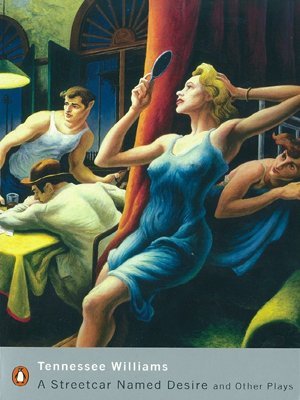

Most of us at one time or another have come on some incident in the street, some scene of senseless brutality or intolerable humiliation, that struck us inescapably as the last act in a life. It is hard to define it very satisfactorily for those who haven’t seen it. “A Streetcar Named Desire,” by Tennessee Williams, is a fine and deeply disturbing play, almost faultless in the physical details of its production and the quality of its acting. Among his many other plays Penguin have published The Glass Menagerie (1944), The Rose Tattoo (1951), Cat on a Hot Tin Roof (1955), Sweet Bird of Youth (1959), The Night of the Iguana (1961), and Small Craft Warnings (1972).Photograph by Eliot Elisofon / The LIFE Picture Collection / Getty He received a Rockefeller Fellowship in 1940 for his play Battle of Angels, and he won the Pulitzer Prize in 19. He stayed there for two years, spending the evenings writing. He entered college during the Depression and left after a couple of years to take a clerical job in a shoe company. When his father, a travelling salesman, moved with his family to St Louis some years later, both he and his sister found it impossible to settle down to city life. Tennessee Williams (1911-1983) was born in Columbus, Mississippi. Tennessee Williams's steamy and shocking landmark drama, recreated as the immortal film starring Marlon Brando, is one of the most influential plays of the twentieth century. Eventually their violent collision course causes Blanche's fragile sense of identity to crumble, threatening to destroy her sanity and her one chance of happiness. When she arrives to stay with her sister Stella in a crowded, boisterous corner of New Orleans, her delusions of grandeur bring her into conflict with Stella's crude, brutish husband Stanley Kowalski.

'I have always depended on the kindness of strangers' Fading southern belle Blanche DuBois is adrift in the modern world.

This Penguin Modern Classics edition includes an introduction by Arthur Miller.

A Streetcar Named Desire is the tale of a catastrophic confrontation between fantasy and reality, embodied in the characters of Blanche DuBois and Stanley Kowalski.


 0 kommentar(er)
0 kommentar(er)
